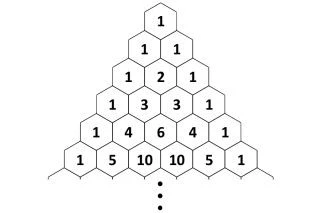Blaise Pascal (1623–1662) was a great French mathematician and philosopher, in addition to being a writer. He made significant contributions to all of these subjects and was known for his assistance.
Pascal developed Pascal’s Theorem when he was 16 years old and created the world’s first completely working mechanical calculator before he was 20 years old. On the subject of hydrostatics, he produced significant contributions, some of the most notable of which are Pascal’s Law, which forms the foundation of the hydraulic press, and his experiment, which demonstrated that the air pressure drops with increasing altitude.
It is generally agreed that his most significant contribution to the field of mathematics was his ground-breaking work developing the contemporary theory of probability. In addition to being a renowned philosopher, Blaise Pascal was also a prolific writer. His writings, such as Lettres and Pensees, are regarded as masterpieces in the French language.
A Glimpse of Pascal’s Life

Blaise Pascal was a French mathematician, religious philosopher, physicist, and writer who significantly contributed to all these subjects during his lifetime (1623–1662). Pascal developed Pascal’s Theorem when he was 16 years old, and before he was 20, he created the world’s first wholly working mechanical calculator.
On the subject of hydrostatics, he produced significant contributions, some of the most notable of which are Pascal’s Law, which forms the foundation of the hydraulic press, and his experiment, which demonstrated that the air pressure drops with increasing altitude.
It is generally agreed that he made the most significant contribution to field of mathematics with his work as a pioneer in the contemporary theory of probability. Blaise Pascal was not only an outstanding philosopher, but he was also an influential writer. His notable works, Pensees and Lettres, are regarded as masterpieces in French literature.
Pascal’s Contribution
Theory of Probability

The contemporary theory of probability was essentially developed by the two correspondents working together, which had a significant impact not only on the development of mathematics but also on the development of other subjects such as economics and social science. Their research on the calculus of probability benefited Leibniz in his development of calculus.
Pascal employed a probabilistic argument known as Pascal’s Wager to support his trust in God and the need to live a good life in his unfinished book Pensées. It is generally agreed that Pascal’s most significant contribution to mathematics was the invention of the theory of probability.
Pascal’s Triangle
Pascal’s “Treatise on the Arithmetical Triangle” was a mathematical book that discussed a tabular form of binomial coefficients. In this representation, each number is the sum of the two numbers above it in the table.
An algebraic expression is considered binomial if it involves two integers acting on by multiplication, subtraction, or addition with a whole number exponent. This kind of equation may be expressed as (x+y)n. Expanding this binomial equation produces a symmetrical triangle made up of the coefficients.
Pascal was not the first to suggest using a triangle in this way. Before him, the triangle was presented by the Persian mathematician Al-Karaji in the 10th century. Also by a Chinese mathematician in the 13th century and in Italy in the 16th century as Tartgalia’s triangle.
But Pascal was the only one who saw a pattern in the rows, columns, and diagonals that made up the array of numbers. For instance, when seen diagonally, the numbers 1, 2, 3,…, which make up the first diagonal, are all natural numbers. Still, the numbers 1, 3, 6, 10,…, which make up the second diagonal, are the triangular numbers in sequence.
The third diagonal consists of 1, 4, 10, etc., pyramidal triangular numbers. There was a good chance he would discover prime numbers, Fibonacci numbers, Catalan numbers, and many other series.
Pascaline

Pascaline is the mechanical calculator designed by Pascal in the mid-17th century. The carry mechanism of Pascaline contributed to the product’s overall success. Pascaline does the addition from 1 to 9 on one dial and carries one number over to the next dial whenever the digits on the preceding dial shift from 9 to 0.
It was developed to directly perform the operations of adding and subtracting integers now, whereas the repetition of addition and subtraction accomplished multiplying and dividing. In 1642, he devised this mechanism, and in 1645, he demonstrated it.
In 1649, French King Louis XIV granted him permission to invent and produce calculating machines in France. This authorization allowed him to begin his work in this field. There are now nine Pascaline calculators, most of which are exhibited at museums around Europe.
Cycloid
A cycloid is a curve produced when a point on a circle moves down the line linearly. Pascal began his research into the subject of cycloids in the year 1658, during a time when he was experiencing severe tooth pain.
After the discomfort in his tooth subsided, he saw it as a message from God and continued with his investigation of cycloids. He could complete his research and write his report in only eight days. To acquire word about his findings, he organized a competition and offered 20 & 40 Spanish doubloons to the winners.
In addition, he figured out how to calculate the volume and surface area of the solid of revolution that was produced by rotating the cycloid around the x-axis.
